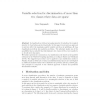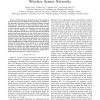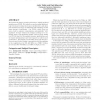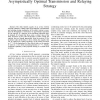97 search results - page 10 / 20 » Making the use of maximal ideals constructive |
GFKL
2005
Springer
14 years 1 months ago
2005
Springer
In classification, with an increasing number of variables, the required number of observations grows drastically. In this paper we present an approach to put into effect the maxi...
INFOCOM
2011
IEEE
12 years 11 months ago
2011
IEEE
—Extracting planar graph from network topologies is of great importance for efficient protocol design in wireless ad hoc and sensor networks. Previous techniques of planar topol...
FPGA
2004
ACM
14 years 1 months ago
2004
ACM
We present the design of a high-performance, highly pipelined asynchronous FPGA. We describe a very fine-grain pipelined logic block and routing interconnect architecture, and sh...
HASKELL
2007
ACM
13 years 11 months ago
2007
ACM
Quasiquoting allows programmers to use domain specific syntax to construct program fragments. By providing concrete syntax for complex data types, programs become easier to read, ...
INFOCOM
2003
IEEE
2003
IEEE
Delay Limited Capacity of Ad hoc Networks: Asymptotically Optimal Transmission and Relaying Strategy
14 years 28 days ago
— The delay limited capacity of an ad hoc wireless network confined to a finite region is investigated. A transmission and relaying strategy making use of the nodes’ motion t...




